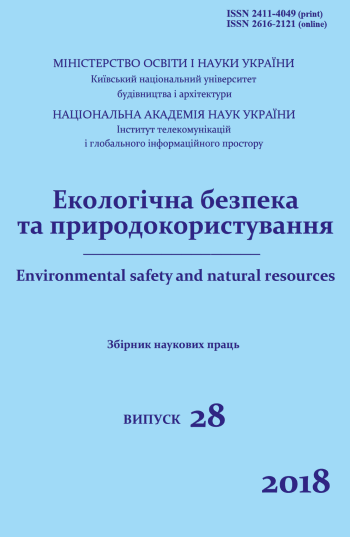The state of drinking water quality on the example of Slupsk city (Poland) and Zhydachiv district (Ukraine)
DOI:
https://doi.org/10.32347/2411-4049.2018.4.27-38Keywords:
drinking water quality, technological processes at the water preparation station, water purification, experimental researchAbstract
The problem of drinking water quality is extremely relevant. According to the World Health Organization (WHO) every year about 25% of the world's population is at risk consumption of low-quality drinking water, and more than 80% of all human diseases are directly related to the use of low-quality water. The aim of the work is to compare the quality of drinking water on the example of the city of Slupsk (Poland) and Zhydachiv district of the Lviv region (Ukraine). The following methods of water quality research are used in this work: visual, nephelometric, potentiometric, conductometric, titration, spectrophotometric and membrane filtration.
A comparison of drinking water quality in Slupsk (Poland) and Zhydachiv district (Lviv region, Ukraine) has been performed. The requirements for drinking water quality in Poland and Ukraine are the same.
In Slupsk (Poland), residents consume water of centralized water supply, which is taken from the horizons with a depth of 50-180 m. Then water enters in the water treatment station, where it is cleaned by aeration and filtration. No chemicals, reagents and disinfectants are added to the water. The block diagram of the technological process at the water preparation station in Slupsk, the scheme of processes for reducing the concentration of iron and manganese, and the results of experimental research on drinking water are presented. Water in Slupsk meets almost all the requirements for the quality of drinking water, except for the compounds of iron and manganese. Therefore, during the purification of water, the removal of these compounds occurs, after which the drinking water meets all the requirements set. Water quality monitoring in Slupsk is carried out continuously at the different stages of production and distribution. It is carried out by two independent laboratories. There are the accredited laboratory of “Water Supply Slupsk” and the laboratory of the regional sanitary and epidemiological station in Slupsk.
Residents of Zhydachiv district use water for both centralized and decentralized water supply. There is a crisis situation with drinking water supply in this area. It has been found that all water samples do not meet the requirements for bacterial parameters and have high iron content. In some samples there is a steady increase in permanganate oxidation and ammonia nitrogen, as well as an excess of chloride, fluorine, dry residue and nitrates. Indicators of pH of water samples taken from wells of different depths and from the crane meet the established norms. Water from the wells has almost by 2 times higher level of specific electrical conductivity water from the tap. The purification of drinking water, which is carried out at the disinfection stations at water intakes of City Municipal Enterprise “Zhydachivvodokanal” and Open Joint Stock Company “Kokhavynska Paper Factory”, is insufficient.
References
Хamkalo, К. R., & Pogrebennyk, V. D. (2017). The state of drinking water quality in Poland and Ukraine on the example of Slupsk city and Zhydachiv district. In Intern. Scientific and Practical Conference “Applied scientific and technical research” (p. 9). Ivano-Frankivs'k: Symfonija forte( in Ukrainian).
Хamkalo, K. R., & Pogrebennyk, V. D. (2017). Metody ochyshhennja pytnoi' vody v m. Slups'k (Pol'shha). In Zbirnyk Naukovyh Prac' “VI-j Vseukrai'ns'kyj Z'i'zd Ekologiv Z Mizhnarodnoju Uchastju” (p. 54). Vinnycja (in Ukrainian).
ISO 7888:1985 Water quality – Determination of electrical conductivity. Edition: 1, Stage: 90.93, TC 147/SC 2. – 8 р. (in English).
Mitryasova, O., & Staddon, C. (Eds.). (2016). Water Security. Mykolaiv: PMBSNU, Ukraine – Bristol: UWE, United Kingdom (in English).
Batmanghelidj, F. (2006). Water For Health. Sankt-Peterburg: Popurry (in English).
Filonova, K. V., & Mis'kevych, S. V. (2006). Problema jakosti pytnoi' vody v Ukrai'ni. In Zbirnyk Naukovyh Prac' “I-j Vseukrai'ns'kyj z’i'zd ekologiv” (p. 243). Vinnycja (in Ukrainian).
Radzka, E., & Jankowska, J. (2015). System zarządzania jakością wody pitnej w Polsce. Zeszyty Naukowe Uniwersytetu Przyrodniczo-humanistycznego W Siedlcach, Seria: administracja i zarządzanie, (34), (p. 22). Siedlcy (in Polish).
(n.d.). Retrieved from http://www.wodociagi.slupsk.pl/dla-klientow-2/plan-bezpieczenstwa-wody/teren-zlewni/ (in Polish).
(n.d.). Kwestia tzw. kamienia. Retrieved from http://www.wodociagi.slupsk.pl/dla-klientow-2/jakosc-wody-w-slupsku/kwestia-tzw-kamienia/ (in Polish).
Koval', S., & Balic'kyj, R. (2010). Program "Drinking water" in the territory of Zhydachiv district until 2020. Zhydachiv (in Ukrainian).
DSanPiN 2.2.4-171-10 “Gigijenichni vymogy do vody pytnoi', pryznachenoi' dlja spozhyvannja ljudynoju”. (2010). Kyiv: Oficijnyj visnyk Ukrai'ny (in Ukrainian).
Pohodylo, J. & Gonsor, O., (2008). Kontrol' jakosti vody za elektrychnymy parametramy. Metrologija Ta Vymirjuval'na Tehnika, (68), 237-242 (in Ukrainian).
Downloads
Published
How to Cite
Issue
Section
License
Copyright (c) 2019 V.D. Pohrebennyk, K.R. Hamkalo

This work is licensed under a Creative Commons Attribution 4.0 International License.
The journal «Environmental safety and natural resources» works under Creative Commons Attribution 4.0 International (CC BY 4.0).
The licensing policy is compatible with the overwhelming majority of open access and archiving policies.

